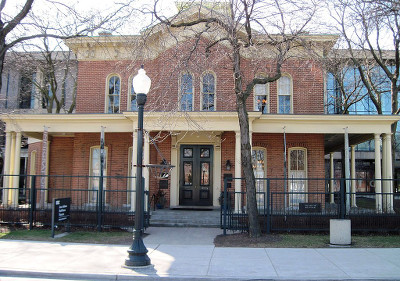
Photo by Zagalejo, 2010.
Imagine a world in which students could visit not just Civil War battlefields that raise the profound issues of slavery and what it means for states to be united, but also buildings that housed places that came to feel like home to people marginalized because of sexuality and gender, places that were important enough to defend against onslaughts by the police. That is the possibility that teaching the lesbian, gay, bisexual, transgender, and queer (LGBTQ) past through historic sites offers. The houses where famous and less known lesbian, gay, bisexual, and transgender people lived, the commercial establishments they patronized and defended, and even places that mark a history of discrimination and violence offer the opportunity to make LGBTQ history a part of US history in a way that makes a difference for students, wherever they are learning history.
A more inclusive history certainly matters to LGBTQ students, who suffer not just from bullying and other forms of discrimination but also from being deprived of a past. Many years ago, I was teaching an introductory US history course when I ran into a student from the class who was working in the local gay restaurant. He told me that he had never heard of Stonewall until I talked about it in a lecture on social movement of the 1960s. He was so excited to hear a mention of the gay past in a history class that he told his roommate about it. He also came out, since they had never discussed their sexual identities, and then the roommate came out to him. The student described the moment as life-changing. Read more »
The views and conclusions contained in the essays are those of the authors and should not be interpreted as representing the opinions or policies of the U.S. Government. Mention of trade names or commercial products does not constitute their endorsement by the U.S. Government.
Part of a series of articles titled LGBTQ America: A Theme Study of Lesbian, Gay, Bisexual, Transgender, and Queer History.
Previous: Interpreting LGBTQ Historic Sites
Last updated: August 11, 2017
